 Last additions - Shirakawa 白川村 Last additions - Shirakawa 白川村 |
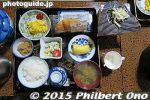
Breakfast at Hisamatsu, Shirakawa-goSep 17, 2016
|
|
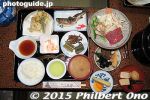
Dinner at Hisamatsu, Shirakawa-go. Includes Hida beef.Sep 17, 2016
|
|

Irori hearth in Hisamatsu minshukuSep 17, 2016
|
|
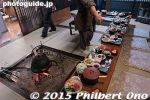
It costs 10 million yen to rethatch the roof. They do it once every 30 years. The thatch is Japanese pampas grass (susuki) from the base of Mt. Fuji.The rethatch cost is subsidized by the national government and municipality. So the family only pays one-third the cost of 10 million yen. In the old days, they had family and friends gather the thatch and the roof was rethatched by the villagers as a community project. Not anymore. They have to hire professionals to do it which cost a lot of money.Sep 17, 2016
|
|
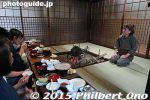
Dinner at Hisamatsu near the irori hearth while the friendly proprietress chatted with us. I asked her about the difficulty of having a successor to take over the minshuku.She said it was a common problem among the minshuku operators there and hoped that one of her daughters would take over. She explained the Three Golden Rules that they follow: Do not sell, do not rent, and do not destroy the farmhouse. They are trying to change the rule about "do not rent." Perhaps if they rent it, the owner family can have another family operate their lodge.Sep 17, 2016
|
|
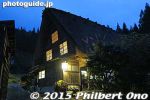
Hisamatsu at night.Sep 17, 2016
|
|
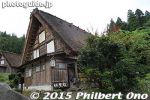
Next to Furusato is another minshuku named Hisamatsu in Shirakawa-go. Looks almost the same on the outside.Sep 17, 2016
|
|
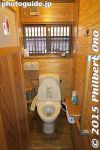
Sep 17, 2016
|
|
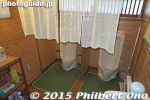
The restrooms are modern. I'm told this part of the house was for horses.Sep 17, 2016
|
|
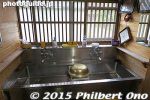
SinkSep 17, 2016
|
|
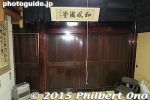
Sep 17, 2016
|
|
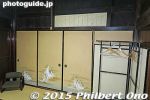
My room in Furusato.Sep 17, 2016
|
|
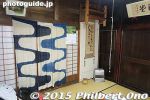
Sep 17, 2016
|
|
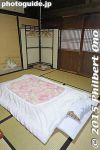
My roomSep 17, 2016
|
|
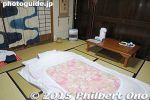
My room in Furusato. It was not the same room where the crown prince stayed.Sep 17, 2016
|
|

I was surprised to see these pictures displayed inside Furusato. They showed Prince Hiro (currently the Crown Prince) who stayed at this minshuku while a college student.His brother Prince Aya/Akishino also stayed at this same minshuku when he was in college.
I was very surprised to hear from the proprietress that the Imperial Household Agency had designated the Furusato minshuku as *the* place to stay for Imperial family members visiting Shirakawa-go. She doesn't know exactly why. She says that although it was an honor to host the Princes, they can't really advertise it (the Imperial family can never be used for commercial purposes). She also lost money because they (her mother) had to buy new, fluffy futons, etc., just for the prince.Sep 17, 2016
|
|

Greetings in English by Furusato. ¥9,000 per night including a sumptuous breakfast and dinner. Sep 17, 2016
|
|
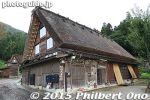
This is a minshuku in Shirakawa-go named Furusato where I stayed overnight. Looks very traditional on the outside and there are strict regulations on keeping it that way. ふるさとSep 17, 2016
|
|
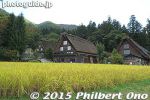
When you want to stay overnight in Shirakawa-go, it's hard to decide which minshuku (farmhouse lodge) to stay in. There's a good number of minshuku in Shirakawa-go.Sep 17, 2016
|
|
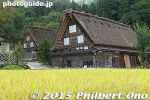
Most people go through an agent to book a room instead contacting individual minshuku to see if they have a room.These are two minshuku, Hisamatsu on the left and Furusato on the right. They are within walking distance from the bus stop.Sep 17, 2016
|
|
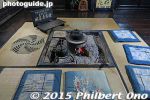
Sep 17, 2016
|
|
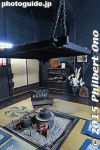
Irori hearth in Myozenji templeSep 17, 2016
|
|
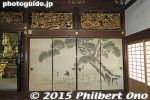
Sep 17, 2016
|
|
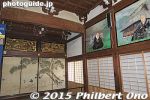
Sep 17, 2016
|
|
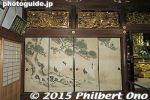
Sep 17, 2016
|
|
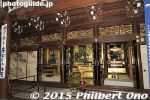
Sep 17, 2016
|
|
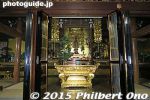
Buddhist altar of MyozenjiSep 17, 2016
|
|

Sep 17, 2016
|
|
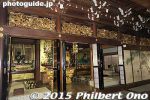
Sep 17, 2016
|
|
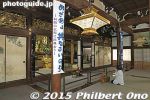
Inside the Myozenji temple Hondo worship hall. Tatami mats and looks like a typical Jodo Shinshu temple on the inside.Sep 17, 2016
|
|
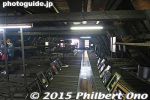
Inside the temple museum.Sep 17, 2016
|
|
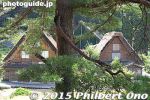
Sep 17, 2016
|
|
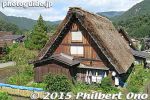
Sep 17, 2016
|
|
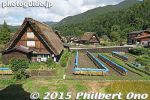
View from the upper floor of the temple museum.Sep 17, 2016
|
|
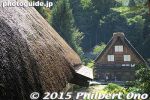
Sep 17, 2016
|
|
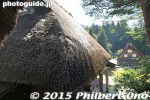
Sep 17, 2016
|
|
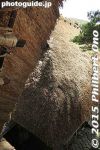
Sep 17, 2016
|
|
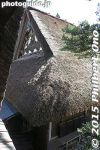
Roof of Hondo worship hall.Sep 17, 2016
|
|
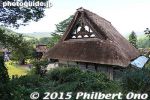
Side view of Hondo worship hall.Sep 17, 2016
|
|
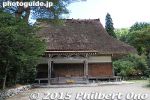
Myozenji Hondo worship hall.Sep 17, 2016
|
|
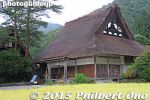
Sep 17, 2016
|
|
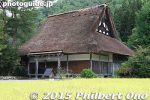
The Hondo worship hall can be entered through the adjoining building.Sep 17, 2016
|
|
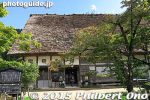
Enter Myozenji through this adjacent and adjoining building that is a museum and minister's residence.Sep 17, 2016
|
|
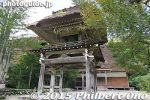
Sep 17, 2016
|
|
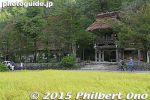
Myozenji's temple bellSep 17, 2016
|
|
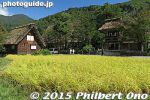
Sep 17, 2016
|
|
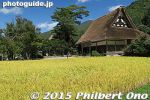
Sep 17, 2016
|
|
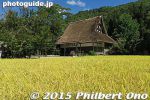
Sep 17, 2016
|
|
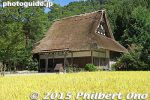
Myozenji's Hondo Main worship hallSep 17, 2016
|
|
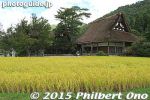
In autumn (Oct.), approaching rice harvest season.Sep 17, 2016
|
|
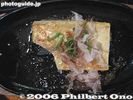
Tofu steakNov 13, 2006
|
|
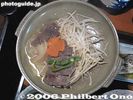
Hida beefNov 13, 2006
|
|

Inside OtayaNov 13, 2006
|
|
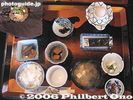
Breakfast at OtayaNov 13, 2006
|
|
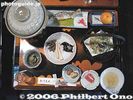
DinnerNov 13, 2006
|
|

Due to a lack of thatch, only half of one side of Otaya's roof is newly thatched.Nov 13, 2006
|
|
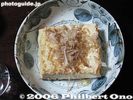
TofuNov 13, 2006
|
|

Otaya minshuku 民宿 太田屋Nov 13, 2006
|
|
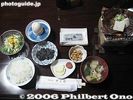
Breakfast at Isaburo minshukuNov 13, 2006
|
|
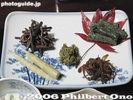
Mountain vegetables 山菜Nov 13, 2006
|
|
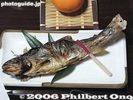
Grilled Iwana river fishNov 13, 2006
|
|
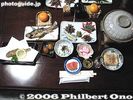
Dinner at Isaburo: River fish and mountain vegetables. After dinner, the proprietress and her husband and daughter sang and danced for us. They demonstrated different traditional musical instruments and had us try playing them. It was great. However, I was told that they don't do that anymore.Nov 13, 2006
|
|
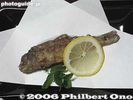
Fried Iwana, eat the head and all.Nov 13, 2006
|
|

Isaburo minshuku 民宿 伊三郎Nov 13, 2006
|
|

Entrance to IsaburoNov 13, 2006
|
|

River next to the inn, mainly to carry away snow.Nov 13, 2006
|
|

Nov 13, 2006
|
|

View of temple roofNov 13, 2006
|
|

Nov 13, 2006
|
|

Myozenji Temple MuseumNov 13, 2006
|
|

Myozenji Temple, Shirakawa-goNov 13, 2006
|
|
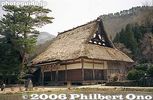
Nov 13, 2006
|
|
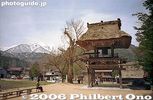
Nov 13, 2006
|
|

Myozenji temple bell with thatched roofNov 13, 2006
|
|

Nov 13, 2006
|
|

Myozenji is a Buddhist temple of the Jodo Shinshu sect, the most common sect in Shirakawa-go.Nov 13, 2006
|
|

Myozenji is the only temple in the gassho-zukuri style with a thatched roof. The Hondo worshp hall is the largest building in Shirakawa-go.Nov 13, 2006
|
|
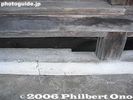
Two foundation beams interlock.Nov 13, 2006
|
|
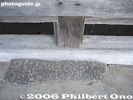
Foundation and pillars rest on stones. The beam is shaped to fit the stone.Nov 13, 2006
|
|
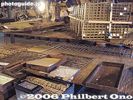
Implements to raise silkworms.Nov 13, 2006
|
|
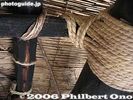
Another rope made of a crushed tree branch to tie smaller beams. It tightens as it dries.Nov 13, 2006
|
|
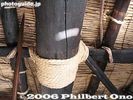
Nov 13, 2006
|
|

Straw rope tie the large beams to form a truss for the roof.Nov 13, 2006
|
|

Where silkworms were raised to make silk cocoons.Nov 13, 2006
|
|
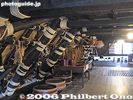
The bottom ends of these beams are pegged into a point (komajiri) resting on another cross beam. Wada House, Shirakawa-goNov 13, 2006
|
|

Slats on the attic floor to enable smoke and soot from the hearth to reach the attic.Nov 13, 2006
|
|
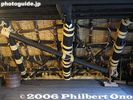
Underside of roof made of an A-frame truss structureNov 13, 2006
|
|

Nov 13, 2006
|
|

A small stream beside the house helps to melt the snow falling off the roof.Nov 13, 2006
|
|

Wada House, Shirakawa-goNov 13, 2006
|
|

Gable openings let light and air come through the attic to foster silkworms.Nov 13, 2006
|
|

Path to Wada House entranceNov 13, 2006
|
|

Main house on left and latrine on right with large vats to gather fertilizer.Nov 13, 2006
|
|

Side view of Wada-ke HouseNov 13, 2006
|
|

Main house with a recently rethatched roof, making it look very smooth.Nov 13, 2006
|
|

Dam reservoirNov 13, 2006
|
|

Shirakawa Village OfficeNov 13, 2006
|
|

Nov 13, 2006
|
|

Manhole in Shirakawa-go.Nov 13, 2006
|
|

Fire hydrantNov 13, 2006
|
|

Nov 13, 2006
|
|
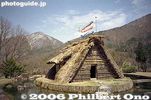
Gassho-zukuri Minka-en outdoor museumNov 13, 2006
|
|
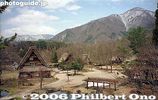
Gassho-zukuri minka houses slated for destruction were moved to this outdoor museum and saved.Nov 13, 2006
|
|

Mihoro Dam, made only of rocks and clay. 131 meters high, 405 meters long.Nov 13, 2006
|
|
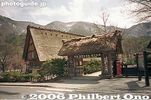
Entrance to the Gassho-zukuri Minka-en outdoor museum.Nov 13, 2006
|
|
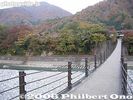
Nov 13, 2006
|
|

Deai BridgeNov 13, 2006
|
|
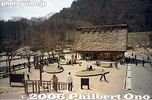
Tourist Info Office near the bus stop.Nov 13, 2006
|
|
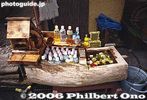
Cooling systemNov 13, 2006
|
|

Deai Bridge crossing the Shokawa River.Nov 13, 2006
|
|

Gassho-zukuri Minka-en outdoor museumNov 13, 2006
|
|
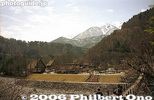
Nov 13, 2006
|
|

Shokawa RiverNov 13, 2006
|
|

Nov 13, 2006
|
|
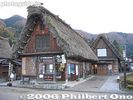
Tourist Information OfficeNov 13, 2006
|
|
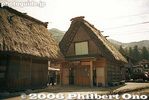
Restroom behind the Tourist Information OfficeNov 13, 2006
|
|

Parking lot along the main road through the village.Nov 13, 2006
|
|
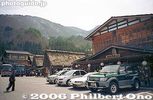
Tourist Information Office in the center of town.Nov 13, 2006
|
|
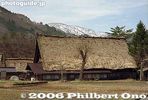
Nov 13, 2006
|
|
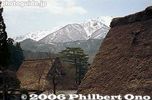
Nov 13, 2006
|
|

Nov 13, 2006
|
|
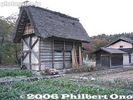
Nov 13, 2006
|
|

Nov 13, 2006
|
|
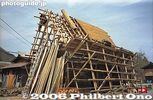
Rethatching a small storehouse.Nov 13, 2006
|
|

Thatch repair work.Nov 13, 2006
|
|
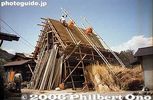
Nov 13, 2006
|
|
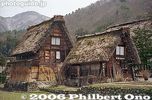
Nov 13, 2006
|
|
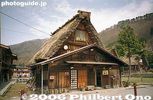
Photo galleryNov 13, 2006
|
|

RestaurantNov 13, 2006
|
|
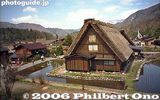
Shirakawa-go 白川郷Nov 13, 2006
|
|

Nov 13, 2006
|
|

It costs several million yen and a small army of workers to replace the thatch. The cost is subsidized by the town, prefecture, and national government.Nov 13, 2006
|
|

Nov 13, 2006
|
|

The thatched roof is replaced every 30 years. Every spring, 6 or 7 thatched roofs are replaced in Shirakawa-go.Nov 13, 2006
|
|

Nov 13, 2006
|
|

Nov 13, 2006
|
|

Shirakawa-go 白川郷Nov 13, 2006
|
|

Nov 13, 2006
|
|

Nov 13, 2006
|
|

Close-up of OgimachiNov 13, 2006
|
|

Bird's eye view of Shirakawa-go from Ogimachi Castle ruins.Nov 13, 2006
|
|

Shirakawa-go is also a National Important Traditional Townscape Preservation District (重要伝統的建造物群保存地区).Nov 13, 2006
|
|
|
|
|
|